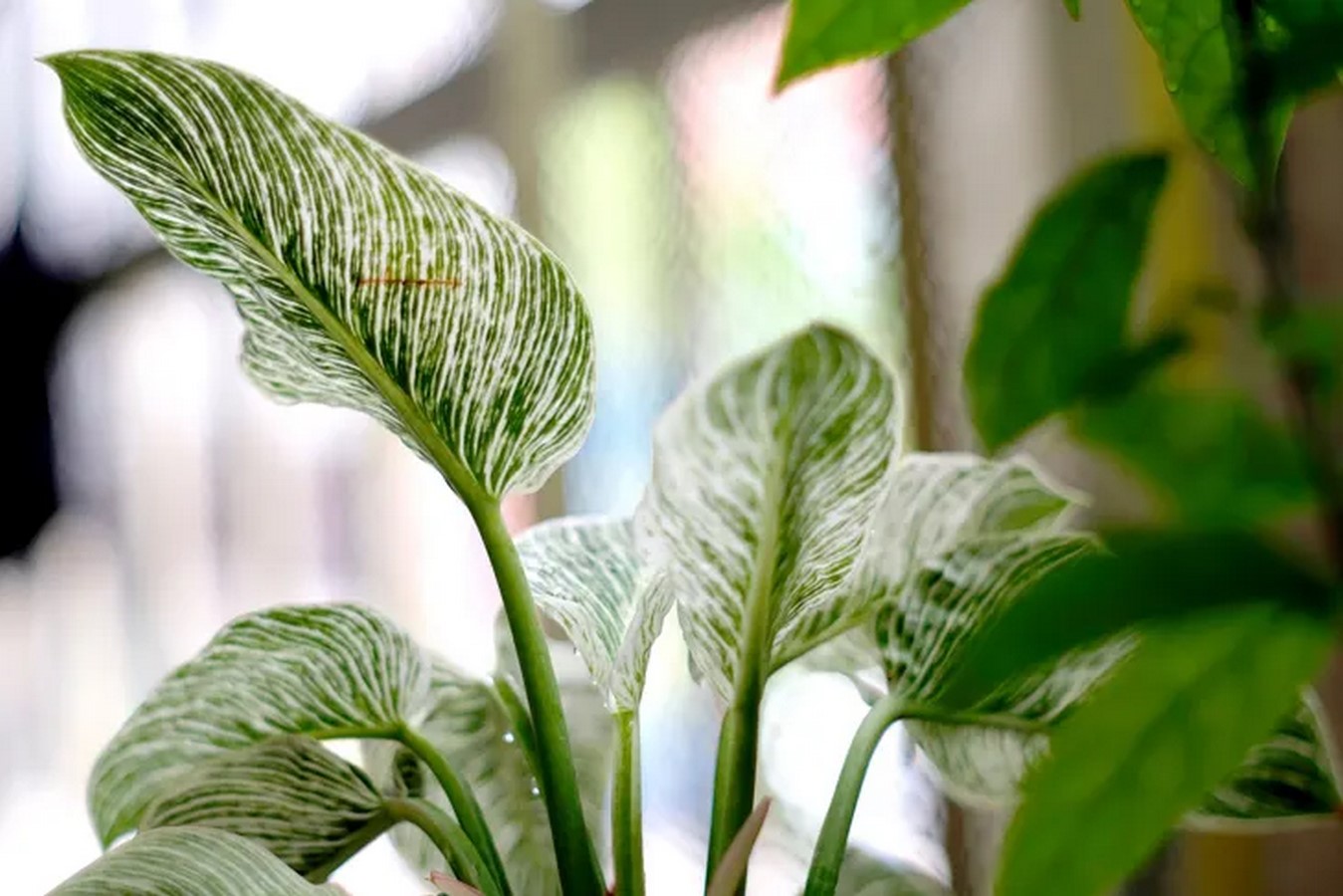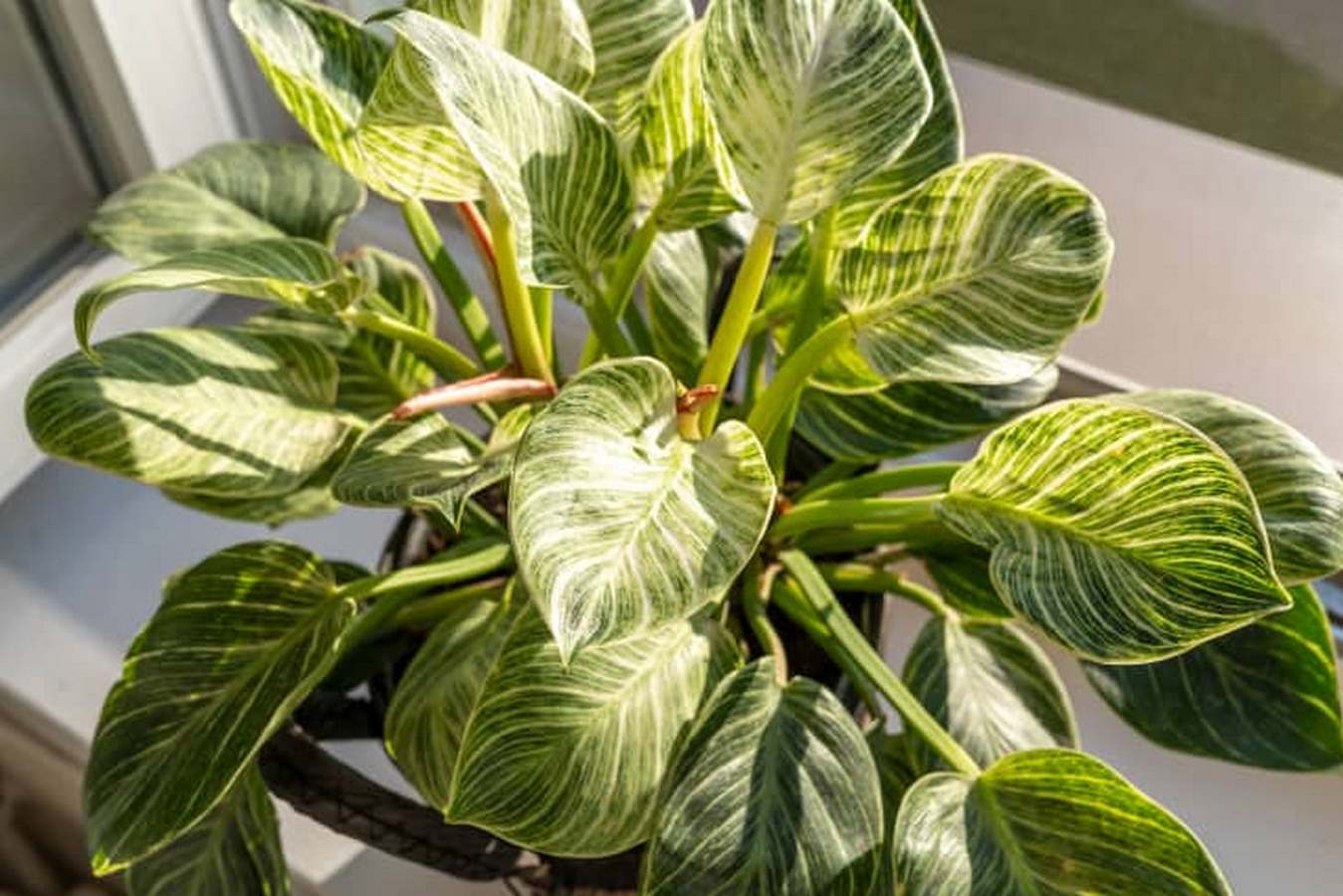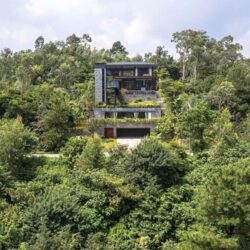A Beginner’s Guide to the Effortlessly Elegant Philodendron Birkin
In the world of houseplants, the philodendron Birkin stands out as a captivating specimen that effortlessly blends beauty with simplicity. What once was considered a rare find has now become a popular choice, adorning the shelves of grocery stores and home centers due to its surge in demand. While its variegated foliage is undoubtedly a crowd-pleaser, the philodendron Birkin proves to be a beginner-friendly delight, requiring minimal maintenance for maximum aesthetic impact.

Philodendron Birkin Unveiled: Origins and Unique Features
The philodendron Birkin traces its lineage to the philodendron Rojo Congo, evolving through a spontaneous chimeric mutation. The resulting plant, after continuous propagation, became the beloved philodendron Birkin. Characterized by dark green, glossy leaves adorned with white or yellow pinstripes, this plant occasionally surprises with fully red or subtly pink leaf variations. The emergence of its distinctive stripes may vary, influenced by lighting conditions and the inherent instability of the Birkin’s mutation.
Cultivating Birkin Brilliance: Care Tips for a Lush Display
While celebrated for its low-maintenance nature, the philodendron Birkin thrives under the care of conscientious plant enthusiasts. Exhibiting a sturdy, upright growth on a robust main stem, the Birkin embraces simplicity in its maintenance routine. Regular dusting of its large, striking leaves not only promotes cleanliness but also enhances variegation by allowing optimal light absorption. Despite its ease of care, the Birkin rewards dedicated owners with lush, perky foliage, creating an appealing focal point in any space.
Toxic Beauty: Understanding the Philodendron Birkin’s Nature
Caution is warranted as the philodendron Birkin holds toxicity for both humans and pets. The plant’s sap and juice contain calcium oxalate crystals, posing potential irritations to the oral cavity and respiratory difficulties in humans. Similarly, in pets, the Birkin may induce mouth and tongue irritation, leading to drooling, vomiting, or swallowing difficulties. Awareness of its toxic nature underscores the need for responsible ownership.

Nutrient Care: Fertilizing and Nourishing the Birkin
Fertilizing the philodendron Birkin aligns with general guidelines applicable to most plants. It is advisable to fertilize only during active growth phases, typically in spring and summer, while abstaining from fertilization in fall and winter. Avoiding fertilization during dormancy prevents mineral accumulation in the soil, preventing potential root damage. For those opting to repot annually, the fresh soil provides adequate nutrients, eliminating the immediate need for additional fertilizer.
Balancing Light Requirements: Illuminating the Birkin’s Beauty
A delicate balance defines the philodendron Birkin’s light requirements. Thriving in low to bright indirect light, the plant’s variegation responds to sunlight intensity. While increased sunlight enhances white variegation, direct light may lead to browning of leaf edges. Maintaining a balance, Birkins tolerate two to three hours of direct morning or late afternoon sunlight. Monitoring variegation changes serves as a guide for adjusting light exposure, ensuring the Birkin’s optimal development.
Hydration Harmony: Watering Wisdom for Birkin Owners
Adhering to a watering routine aligned with light conditions is essential for the philodendron Birkin’s well-being. Recommended as a general guideline, weekly watering in summer and bi-weekly intervals in winter suffices. However, the soil’s moisture level dictates the frequency, emphasizing the importance of allowing the soil to almost completely dry before subsequent watering. Well-draining pots with drainage holes accommodate the Birkin’s preference for avoiding overly moist conditions.

Propagation Prowess: Sharing the Birkin’s Beauty
The philodendron Birkin’s ease of propagation adds to its allure. Creating cuttings with sterile scissors, including one or more leaf nodes, initiates the propagation process. Placing the cutting in water until roots develop ensures a successful transition to soil. This simplicity enables Birkin owners to share the plant’s beauty with friends, fostering a sense of community among plant enthusiasts.
Pruning for Purity: A Minimalist Approach
Pruning, though not essential for the philodendron Birkin, allows for maintenance and aesthetic adjustments. Removing dead or damaged leaves, along with trimming diseased portions, promotes the plant’s health. An intriguing aspect of philodendrons, including the Birkin, is their ability to generate new leaves even after cutting damaged ones. For those seeking a more branched appearance, pruning the top of the stem encourages lateral growth, adding versatility to the plant’s structure.
Addressing Birkin Woes: Solutions to Common Challenges
While generally resilient, philodendron Birkins may encounter occasional challenges. Pests, including mealy bugs, spider mites, or aphids, can be managed through vigilant inspection and manual removal. Fungal diseases, causing brown lesions or wilting leaves, necessitate preventive measures such as sterile potting medium and well-draining soil. Brown tips, curling leaves, or yellowing may signal specific issues like underwatering, excessive fertilizer, or low humidity, emphasizing the importance of responsive care.
In the realm of houseplants, the philodendron Birkin emerges not only as an aesthetic delight but also as a companion for aspiring plant enthusiasts. Its adaptability, coupled with striking visual appeal, transforms spaces into vibrant showcases of natural beauty. As caretakers embrace the journey of nurturing their Birkin, the plant reciprocates with flourishing foliage and an enduring presence in the heart of any botanical haven.



















